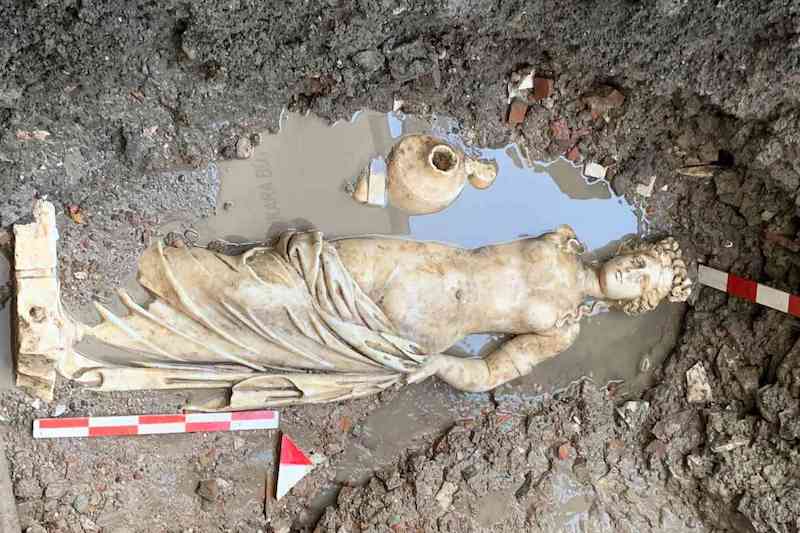An enchanting 1,800-year-old water nymph statue emerged from the depths of history in Türkiye’s ancient city of AmastrisA1,800-year-old water nymph statue has been unearthed during excavations in the ancient city of Amastris, situated in the Amasra district of northern Turkey’s Bartın province.

This ancient water nymph statue, believed to have been crafted around 1,800 years ago, was buried 3 meters (around 9.5 feet) beneath the surface.
The discovery was officially announced by the excavation team through their social media account, stating, “During the ongoing excavations in the ancient city of Amastris, we uncovered an exquisite water nymph statue believed to be 1,800 years old.”
The statement further elaborated that this statue stands at an impressive height of 1.53 meters and can be traced back to the A.D. second century.
Following meticulous restoration work, this captivating relic will be proudly exhibited at the Amasra Museum for all to admire.
A 1,800-year-old water nymph statue has been unearthed during excavations in the ancient city of Amastris, Amasya, northern Türkiye, Sept. 8, 2023. (DHA Photo)

Nymphs in Greek mythologyNymphs, who held diverse connections to Olympian gods, are profoundly significant beings in Greek mythology and culture. Their special association with the element of water, especially freshwater, underscores the crucial role of water in sustaining life on Earth. Nymphs were closely tied to the flourishing of vegetation, often described as the offspring of major rivers or even as the daughters of Okeanos. These nymphs were categorized into three distinct types: Naiads, Oreads and Dryads.
Naiads: Naiads were a type of water nymph primarily linked to freshwater sources such as rivers, streams, lakes and fountains. Each Naiad was believed to inhabit and safeguard a specific water source, almost like a guardian spirit. They were often depicted as beautiful young women and were considered minor goddesses. Naiads were renowned for their grace and charm, and in Greek mythology, they possessed the power to both bless and curse those who encountered their waters. They symbolized the life-giving properties of water.
Oreads: Oreads were nymphs dwelling in mountainous regions near natural springs. They were seen as divine embodiments of these rugged landscapes. Oreads were typically portrayed as beautiful young women, harmonizing with the essence of the mountains they inhabited. They were believed to be companions of Artemis, the goddess of the hunt, and were known for their deep connection to nature and the wild.

Amasra’da tarihi Bedesten’de yapılan kazılarda 1800 yıllık “su perisi heykeli” bulundu
A 1,800-year-old water nymph statue has been unearthed during excavations in the ancient city of Amastris, Amasya, northern Türkiye, Sept. 8, 2023. (DHA Photo)
Dryads: Dryads were woodland nymphs, often depicted as female spirits or tree spirits. They were closely associated with oak trees and were believed to inhabit and protect specific trees. The belief held that if harm came to the tree inhabited by a Dryad, the spirit herself would suffer. Dryads were considered guardians of the forests, celebrated for their beauty and profound connection to the natural world.
Nymph artifacts are widespread in museums worldwide, reflecting the enduring significance of these mythical beings in archaic cultures like the Greeks and Romans. For instance, the Louvre Museum in Paris showcases an extensive collection of ancient Greek and Roman art, rich with sculptures and vases vividly depicting nymphs and mythological narratives. The British Museum, renowned for its diverse array of ancient artifacts from various cultures, also houses items intricately linked to Greek mythology and nymphs.
These mystical and ancient creatures continue to leave their mark in numerous esteemed institutions across the globe. They can be encountered at institutions such as the National Archaeological Museum in Athens, the Metropolitan Museum of Art in New York and many others. These artifacts not only provide a window into the past but also emphasize the enduring allure of nymphs in the annals of human imagination and creativity.






